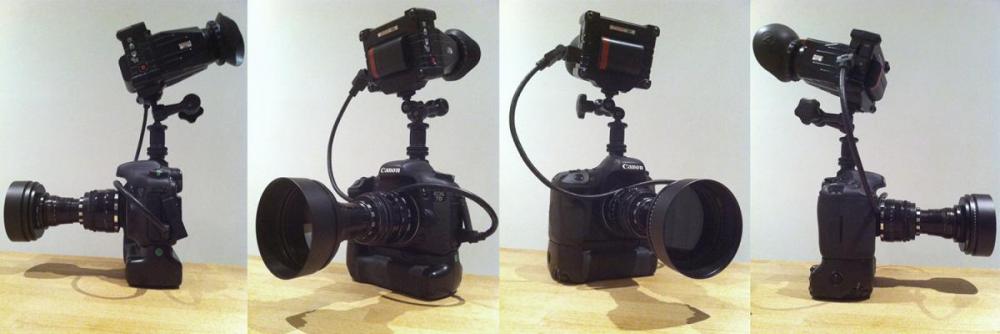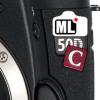Leaderboard
Popular Content
Showing content with the highest reputation on 02/08/2013 in all areas
-
[attachment=420:7D Trumpetsmall.jpg] This is an image of the coolest looking anamorphic setup I have ever seen. Cinevision 8mm 1.5x anamorphot, helios zebra 44-2 (with matched blue flares to match the horizontal blue flare of the cinevision) and the zacuto evf with 1.5x desqueeze. due to the amount of flare he has fitted a hood and variable nd which is probably a good idea for sunny days. this is how the system looks:- flares:- http://vimeo.com/58577845 http://vimeo.com/59005040 use:- http://vimeo.com/587846322 points
-
Sony RX100: Getting the best video out of it...
BydrodoFieddy and one other reacted to A Y for a topic
The AdobeRGB version looks more contrasty to me, but you can also use a histogram to see the actual differences. In case you're wondering, I'm using a browser plug-in written by a friend to show the histogram. It works on almost every website except for Facebook, I think. Get it here for Chrome: https://chrome.google.com/webstore/detail/image-histogram/kgefpfienchbbehcjnmbmogdigoedhaj2 points -
I just bought a Sony DSC-RX100. After a couple years shooting my personal projects on a Canon 7D, I needed something more compact that I could carry with me at all times, and the Sony DSC-RX100 looked like it could be the one. The great reviews, the ability to shoot 1080p at 50fps with a fast Zeiss IS lens, full manual control in video mode, focus peaking and a 16mm sized sensor convinced me to go for it! My footage shot on the 7D improved quite a lot during the time I've been using it, knowing a camera's strong points and especially its limitations is very important to getting good images out of it, so the first thing I did with the Sony DSC-RX100 was to shoot some tests to help me decide which settings I'll be using when shooting video with it. Like most people around here I learn so much from online reviews and discussion forums, and those have been a great help deciding my gear purchases, so I'm sharing what I learned from my tests as a way to return the favor and give something back to the community. There's been some good reviews of the Sony DSC-RX100 online, and some useful info spread around the internet, but I think this post will cover a lot of useful information for whoever's interested in this camera for video, and much of this info will also apply for any other similar camera. I started by turning off all the automatic picture improvement options, as they usually degrade the quality of the image and make it less gradable, then I set the codec to AVCHD at 28mbits and 50p (PS). SHOOTING MODE For video shooting I'd recommend setting the top wheel to video mode and then selecting video-M for manual video shooting The RX100 does have a dedicated Movie Recording button, and can shoot video on any Stills mode, but you might get aspect ratio and exposure changes once you hit the Record button in these modes. In video-M mode you'll get what you see on screen. RECORD SETTINGS The Sony RX100 can shoot movies in two different formats, MP4 and AVCHD. All MP4 options are below 1080p resolution though, so I won't get into those. In AVCHD mode however, we get 3 different 1080 options: 50i 24M (FX) (50i @ 24Mbps, Blu-Ray AVCHD disc compliant) 50i 17M (FH) (50i @ 17Mbps, DVD AVCHD disc compliant) 50p 28M (PS) (50p @ 28Mbps, Progressive Scan) So it seems like we get 50i at 17Mbps and 24Mbps, and we get 50p at 28Mbps, but not really… The 50i mode is actually capturing 25p images out of the sensor and encoding them as 50i footage, this means that we do end up with interlaced footage, but since it was captured progressively, de-interlacing it will produce a clean 25p image! So if we're looking for the best possible video out of the RX100, we should use 50i 24M for 25fps video and 50p 28M for 50fps video. In theory, shooting 50i 24M gives us the best bitrate per frame in this camera, almost twice as much as shooting 50p 28M. Shooting 50fps however would have neighboring frames changing less than when shooting 25fps, helping the encoder do a better job, but still the per frame bitrate is lower, and here's a comparison that shows is. If you look at the darker areas in the back where the window is, you'll see that the 50i version is slightly cleaner. Here's an example of something in motion shot at 50i and 50p, the 50i frame was de-interlaced and as you can see there's no interlacing artifacts at all. Considering all of the above, I think it's safe to say that the 50i 24M mode, which is in fact 25p @ 24Mbps, will give you best video quality out of this camera. CREATIVE STYLES Creative Styles is the RX100's designation for Color Profiles. My first test was to choose the flattest Creative Style the camera had to offer, so I shot some footage of all the different styles. After looking at all these different images, I decided to go with the Portrait Creative Style, as it seems to be the flattest of them all. EXPLORING THE PORTRAIT CREATIVE STYLE Each Creative Style has settings for Contrast, Saturation and Sharpness that can be set from -3 to 3, so I shot some more footage using the Portrait Creative Style in a number of different settings. Using the Portrait Creative Style at the minimum settings (Contrast: -3, Saturation: -3, Sharpness: -3) definitely (and obviously) seems to be the flattest style in this camera, but I had to check how well it graded and how it compares to using the default values (Contrast: 0, Saturation: 0, Sharpness: 0). On the top left you have a frame shot using the Portrait Creative Style, with all the settings set to 0, on top right you have a frame shot using the Portrait Creative Style in its flattest settings (Contrast: -3, Saturation: -3, Sharpness: -3). On the bottom right frame I added some sharpness to the flat image, which responded quite well, and on the bottom left frame I added not only sharpness but also increased the Saturation and Contrast in order to match the top left frame (Contrast: 0, Saturation: 0, Sharpness: 0). The result is an image that matches in color saturation and contrast, but with a much nicer detail and less compression artifacts. It looks sharper and cleaner overall, which made me decide to use this Creative Style and these settings from now on. SHOOTING BLACK & WHITE The following test is something I've been wanting to do for a while, regardless of the camera. The thinking behind this test was: "If the camera is compressing B&W footage instead of color footage, maybe it can do a much better job at it since it doesn't have all the color information to process, so even using the same bit rate could give us better results." Of course I don't know the details on the cameras' inner workings, but assuming the B&W Creative Style is applied BEFORE the footage is compressed to AVCHD, then this should work. Maybe. So I shot some footage using the B&W Creative Style in its flattest settings (Contrast: -3, Saturation: -3, Sharpness: -3), which you can see on top left, and then some more footage using my new favorite Portrait Creative Style, also in its flattest settings (Contrast: -3, Saturation: -3, Sharpness: -3). On the middle left frame, I increased the sharpness and the contrast on the image to make it less flat, and on the middle right frame I did the same, and also desaturated it. As you can see both images are different, since the B&W Creative Style's color conversion is not merely desaturating the image to create a B&W version, it's using a more clever process that also looks better, but anyway, the point here is to test the image compression and figure out which one gives cleaner results, so on the last test frames I increased the exposure by 2 stops to find out how well the images handled it. On the bottom left frame you can see how much cleaner the image shot with the B&W Creative Style is, compared with the one shot using the Portrait Creative Style, it's actually beautifully clean and overexposing it by 2 stops didn't show any ugly artifacts at all. So my conclusion on this one is, if you're shooting for black and white, and you're sure that's the look you'll want (since it's kind of hard to color B&W footage if you change your mind afterwards), then using the B&W Creative Style will give you far superior results! DYNAMIC RANGE OPTIMIZER The Dynamic Range Optimizer works when writing to compressed formats, such as JPG, MP4 or AVCHD. It has no effect when shooting RAW. Its purpose is to capture more detail in the areas that are more prone to get lost when using compressed formats, such as dark shadows. It works in the darker areas of the image, making them brighter and producing a flatter image, which makes it easier on the image compression to achieve better results. Here's a test scene shot using all the DRO levels available. There's also an Auto Mode, but I suspect it wouldn't give predictable results when shooting manual video. The result is quite clear on every mode. Personally I think 5 is too much and might be actually degrading the image more than it helps, but lower settings definitely look not just useable but very useful in achieving a flat and clean image. I'd say using the DRO in its modes 2 and 3 would definitely help achieving a better flat image. I'll probably leave it at 2 all the time and increase it to 3 in situations with more contrast. 5DtoRGB I've used 5DtoRGB on Canon footage since the early beta versions, and I honestly don't understand how come it's not used by everyone. 5DtoRGB features one of the best YCbCr to RGB compression out there, and it's free!!! (the Pro version with batch capabilities costs $50 though) 5DtoRGB does a great job improving aliasing and compression artifacts and transcoding to 10-bit Prores (can also transcode do DPX image sequences and DNxHD files), or at least it did with Canon DSLR footage, so I thought I'd try it with the RX100. The top frame is from the original AVCHD file and the bottom frame is from the Prores transcoded file out of 5DtoRGB. 5DtoRGB automatically changed the Decoding Matrix setting to ITU-R BT.709, so I assume that's the one to use with the RX100 (Canon DSLRs like the 550D, 60D or 7D used the ITU-R BT.601 Decoding Matrix, the 5Dmk3 however used the ITU-R BT.709). Looking at it like this there's not much of a difference, so I went looking in the channels. The Red and Green channels looked quite clean in both versions, but looking closely at the Blue channel you can see how 5DtoRGB makes a pretty good job at smoothing out some of the compression blockiness, but mainly smoothing out the aliased lines you get on sharper edges. Using 5DtoRGB won't do any miracles, but when shooting to 8 bit compressed codecs, every little bit helps, and using it along with a flat Creative Style will definitely help you getting cleaner and better images. SHUTTER ANGLE / SHUTTER SPEED The Sony DSC-RX100 has the annoying feature of only shooting 50fps (or 60fps on NTSC markets). On one hand it's great to be able to shoot 50fps at 1080p, but on the other hand, shooting 25fps at the same bit rate would probably produce better results with less compression. One of the advantages of this could be that you'd always have the extra frames in case you needed the slow motion effect, but unfortunately that's not quite the case, since the ideal shutter speed for 25fps real time playback is different than the ideal shutter speed for 25fps slow motion playback. If you're planning on shooting for 25fps real time playback, then you should set your shutter to 1/50, but if you intend to shoot for slow motion playback at 25fps, then you should set your shutter speed to 1/100. Using a shutter speed of 1/100 for real time 25fps playback will not give you enough motion blur, and the motion playback will not be as smooth as it should. Also, playing back footage shot at 1/50 shutter speed at 25fps slow motion will have too much motion blur, making its motion look rather fuzzy. Here's a sample file you can download yourself. This was shot at AVCHD, 1080 50fps with a shutter speed of 1/50, meant to be used on a 25fps timeline, playing at real time: https://dl.dropbox.com/u/8569573/rx100review/RX100videoSample1.mov That's it for now, I really hope it helps some people out. I have some videos I can share later on if you're interested, and I also might update this review with tests of the different Steady Shot modes once I get to them. Keep in kind that these are only my findings and personal opinions, it would be great to hear from people with different opinions, or about settings you think would give better results. Enjoy!1 point
-
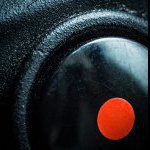
Nikon D5200 frame grab - versus Panasonic GH3 - I'm surprised
Ernesto Mantaras reacted to QuickHitRecord for a topic
To my eye, the image from the D5200 doesn't look as crisp. I'll be curious to see some comparisons between 400% blow ups. Does it enable magnified focus assist when plugged into an external monitor? Coming from the GH2, that's a big one for me.1 point -

List of most popular rental cameras
jgharding reacted to Andrew - EOSHD for a topic
The C300 is certainly priced for rental. I prefer the image from the Blackmagic. To get a job done easily and fast - I'd probably choose the C300, for pure artistry the Blackmagic. I'm not surprised the 5D has disappeared from rental... It never made much sense to rent one when they are so cheap to own! I bet there's a lot of owner operators still shooting their commercial work on one.1 point -

ARRI Sensor Technology
jgharding reacted to Andrew - EOSHD for a topic
I film look takes a lot of data. I think the compression required on DSLRs plus the fact that engineers think grain is a fault, makes for a very electronic looking image.1 point -
Right- and the fact that they got started by digitizing film and retaining the film look before creating a digital camera explains the 'Hollywood popular' image.1 point
-

Meet..... THE TRUMPET! (8mm 1.5x)
richg101 reacted to Sean Cunningham for a topic
The rainbow diffraction patterns, is that from micro cleaning marks on the lens? It looks really cool and I don't think I've seen that effect quite so pronounced at high flare incidence. Neat.1 point -
Judging from these images I'd say the Color Space has no effect on the video mode :) I put both images one on top of the other and I don't think there's any difference. There's a slight angle change which can make a big difference on reflective surfaces such as the mug, but overall I don't see any change in color at all, not the kind of difference you'd see between sRGB and AdobeRGB at least. Might be worth shooting some stills too to see if the difference is more apparent, and then compare it to video footage of the same thing to find out which color space the camera is using on video mode.1 point
-

What do you look for in a grungy lens?
BydrodoFieddy reacted to richg101 for a topic
If you were buying a really character-full lens to get a vintage or raw look what sort of characteristics do you look for? Is it loads of flare?, lack of contrast?, a particular colour to the flares and image? Weird defocus artifacts? rough ground elements? micro cleaning marks? misalignment? interested to hear your thoughts:)1 point -
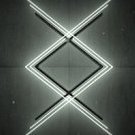
Download an ungraded EOS 1DC film
Taxrummawoodo reacted to jgharding for a topic
Nino Letiner has stuffed one on his server. This will run out of bandwidth eventually though. I figure this is the best way to judge it, actually take a film and grade it yourself. It's been output as 4K ProRes, so not quite original but as close as you're gonna get. http://ninofilm.net/blog/2013/02/05/canon-eos-1dc-test-short-hyber-nation-review/ I don't see myself buying (!) or really even hiring one any time soon, but it's nice to see what kind of video we can expect in cheaper models in not too much time. JG1 point -
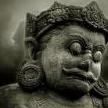
most affordable, but portable, external monitor for gh2?
craigbuckley reacted to sanveer for a topic
[quote name='Matt' timestamp='1352560254' post='21449'] I have a Nexus 7 and hunted all over the web to see if there was a way to use it as an external moniter for the GH2 but there doesn't presently seem anyway to do it. [/quote] I wrote in, to them, requesting them to make an app, for the Panasonic GH2. I guess, if more people write in, they may be tempted, to make it compatible, with the GH2 (and later, perhaps, the GH3), as well. this is the url, to write in, to them: http://dslrcontroller.com/contact.php1 point

